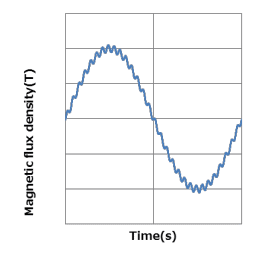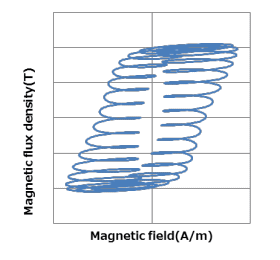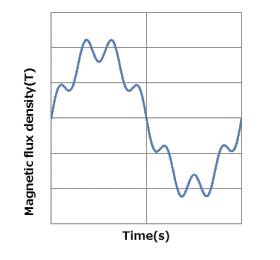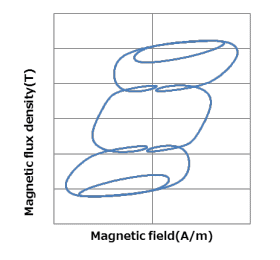Contents
1. Background
2. What Anomalous Eddy Current Loss is
3. Issues with Calculating Anomalous Eddy Current Loss
4. Refining Anomalous Eddy Current Loss Calculations
5. Verification and Results
6. Conclusion
7. Reference
1. Background
In iron loss analysis, conventionally, methods using previously measured iron loss data have been mainly used (hereinafter referred to as conventional methods). However, since the range of application of conventional methods is limited to the actual measurement conditions, there were issues when evaluating the influence of harmonic waves or direct current superposition. New models such as the play model and the 1D method were applied to iron loss analysis (hereinafter referred to as new methods). Hysteresis loss was improved by the play model and the accuracy of classical eddy current loss calculations were improved by the 1D method.
Among iron loss components, there is anomalous eddy current loss in addition to hysteresis loss and classical eddy current loss. Along with the improvement of the accuracy of hysteresis loss and classical eddy current loss mentioned above, the improvement in the accuracy of anomalous eddy current loss has become a subject. In this paper, the improvements in the accuracy of anomalous eddy current loss calculations are described.
2. What Anomalous Eddy Current Loss is
First, the mechanism of anomalous eddy current loss generation and the definition of anomalous eddy current loss as a component of iron loss are stated.
Physically anomalous eddy current loss is distinguished from usual eddy current loss because of their different sources of generation [6]. Normal eddy current loss is called classical eddy current loss, a loss due to eddy currents generated in a uniform conductor. On the other hand, the anomalous eddy current loss is a loss caused by magnetic domain wall movement. A magnetic body such as an electromagnetic steel sheet has magnetic domains, and their magnetic domain walls move due to an alternating magnetic field. Anomalous eddy current loss refers to the eddy current loss caused by the movement of the magnetic domain walls.

(a) Magnetic flux density waveform

(b) Hysteresis loop
Fig. 5 Fundamental + 7th harmonic
6-kHz harmonic superimposed on fundamental (200Hz)

(a) Magnetic flux density waveform

(b) Hysteresis loop
Fig. 7 Fundamental + 7th harmonic
Harmonic component at 20% of fundamental superimposed on the fundamental
You need to sign in as a Regular JMAG Software User (paid user) or JMAG WEB MEMBER (free membership).
By registering as a JMAG WEB MEMBER, you can browse technical materials and other member-only contents for free.
If you are not registered, click the “Create an Account” button.
Create an Account Sign in



